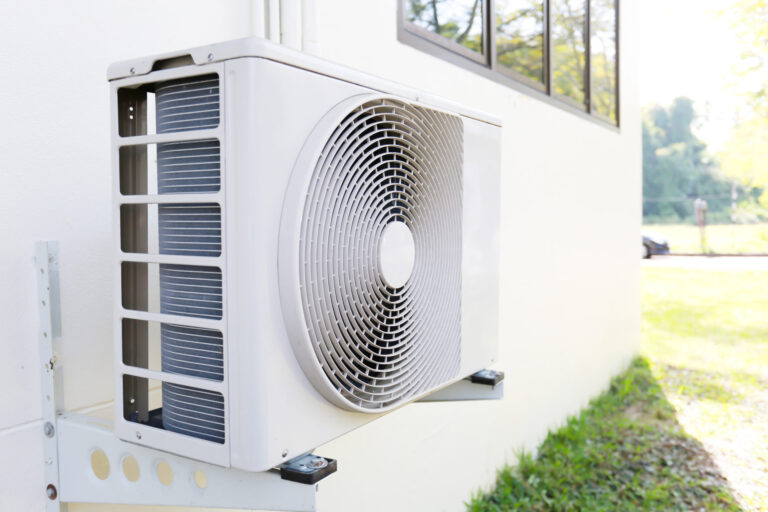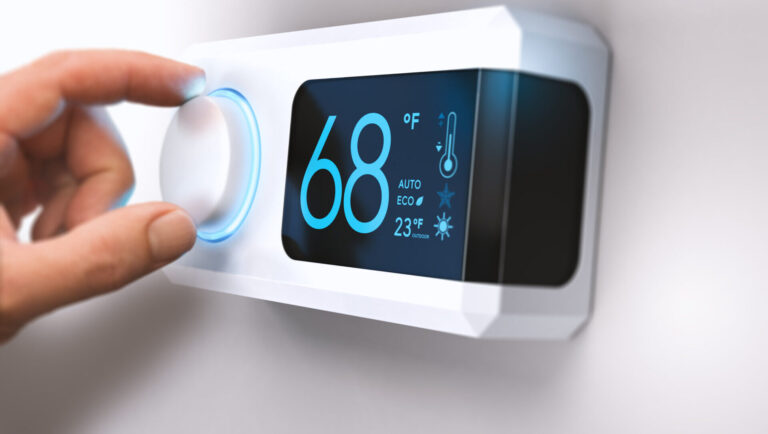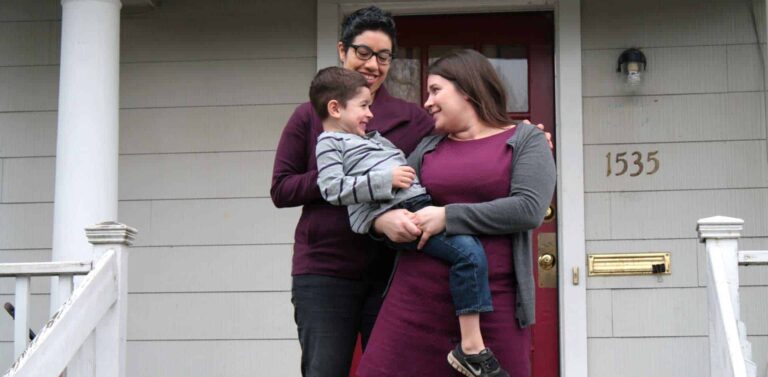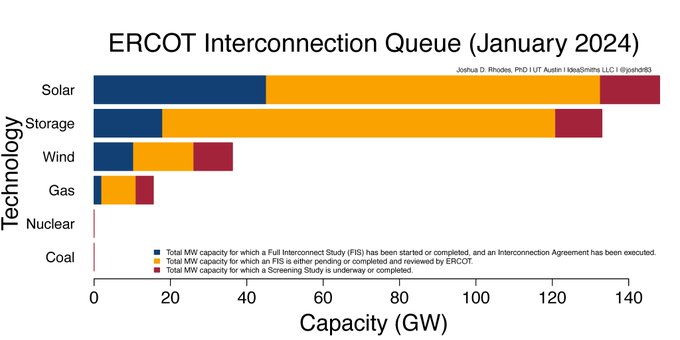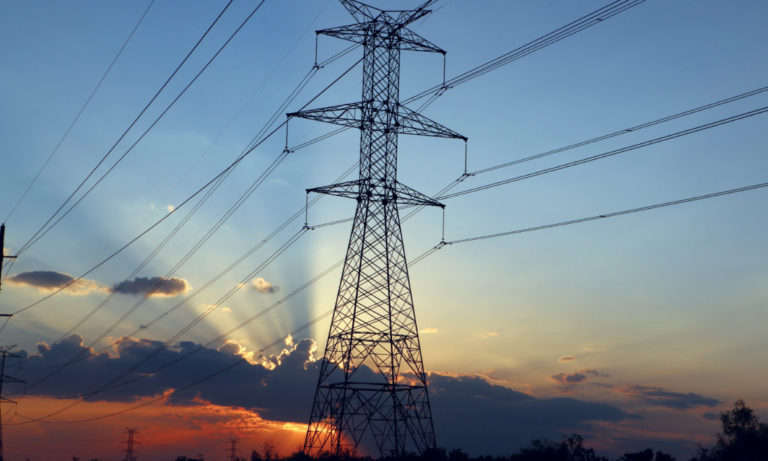July 12, 2023
By Cavan Merski
In Texas, more solar and wind power are coming online each year to meet growing electricity demand and a warming climate. Cheaper and larger batteries now help homes and utilities maximize solar energy and balance demand peaks – and more batteries are coming.
These new technologies are encouraging. When it comes to reducing our reliance on fossil fuel electricity, the more tools, the better. But hidden in existing homes is another way to significantly reduce peak demand without requiring significant home or utility hardware upgrades: smarter air conditioning.
Energy efficiency and demand response solutions have been touted by experts as “low hanging fruit” for decades, but they’re still overlooked by grid managers and politicians.
Here in Texas, where the population and electricity demand continue to grow, developing these resources to their full potential should be atop the state’s energy priority list.
Our new analysis examines how behavioral tendencies (like manual thermostat adjustments) and home technology (like smart thermostats) can significantly reduce electricity demand for air conditioning during hot Texas summers.
Smart Homes + Active Homeowners = Massive Conservation
Smart thermostats are known for saving customers money over time by enabling automated and remote control of heating and cooling systems. But they also present a game-changing opportunity for electric utilities to manage peak demand through demand response programs.
We built a regression model from data from homes in our research network over four grueling Texas summers and adjusted for the size of the home and summer temperature variations year-to-year. The model showed that simply having a smart thermostat with occupancy sensors and algorithmic thermostat adjustments lowered the summer electric demand of our sample by 24.5%. Manually adjusting thermostats when residents left their homes used 11.9% less energy over the summer, regardless of whether they had a smart thermostat or not. Homes with an occupancy sensor and whose residents made manual adjustments when they left the home used an incredible 35.4% less energy for cooling than homes that didn’t.
Download our Smart Cooling analysis for suggestions on how utilities, grid managers and tech companies could leverage this potential.
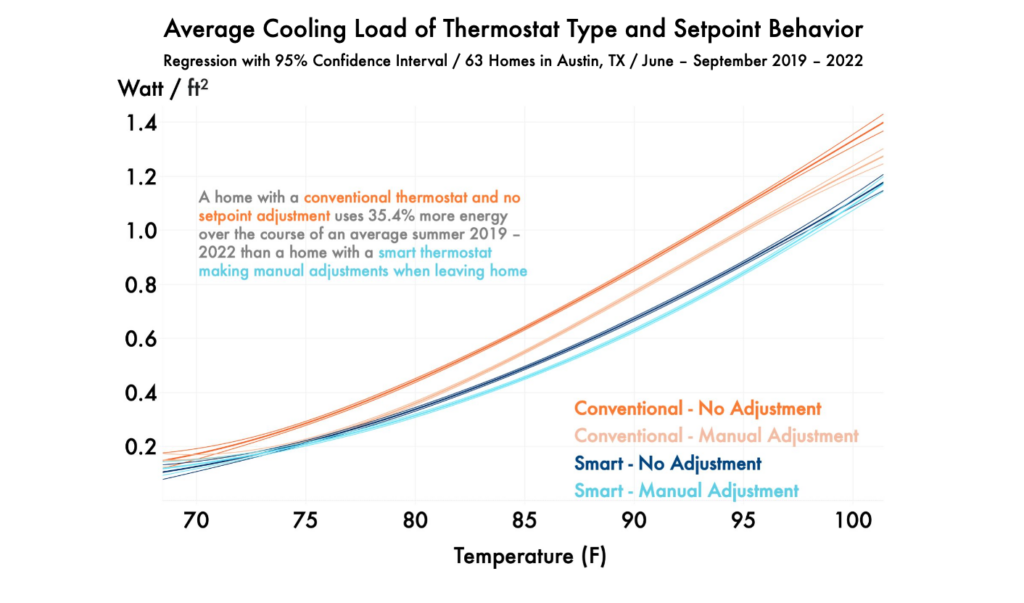
More, Please
The massive energy savings our model suggests, however, are not even close to being fully realized in the real world. One study estimates only 16% of internet-connected homes in the United States have smart thermostats, and less than half of our sample said they adjusted their thermostat when they left the house. This suggests massive unrealized potential energy savings if these strategies can be employed by a larger percentage of the population.
Moreover, our analysis suggests that accentuating the importance of home/away functions, rather than relying on the manual adjustments of homeowners, could further amplify this potential.
It’s hard (and unwise) to extrapolate the findings from one sample and analysis to the entire population. Yet existing research suggests the broad potential of smart thermostats. A recent ACEEE study projects that smart thermostats can reduce ERCOT summer peak demand by 5.2 gigawatts by using less energy overall (1.3 GW) and including homes with smart thermostats in demand response programs (3.9 GW).
Our analysis confirms that these actions present huge opportunities for homeowners to save energy over time, meaningfully reduce peak demand and provide flexible demand response for utilities that is cheaper and more flexible than adding more peak generation capacity.










